Further Resources
I hope you have found this book interesting and useful. If you want to know more about sound design and making music with synthesizers, then I suggest you head over to my website (noisesculpture.com ) and check out my music-related books
) and check out my music-related books and videos
and videos . If you're browsing the site, I suggest you look at the following books and videos first.
. If you're browsing the site, I suggest you look at the following books and videos first.
How to Make a Noise Series of Books
There are five books in the How to Make a Noise series (this one, plus the four others listed here). Each book looks at a different aspect of synthesis, focusing on the particular strengths of that technique.
While each book is separate, there is (as you would expect) some overlap (for instance, a filter will always act like a filter, whatever the synthesizerbut the way that the filter is used will vary).
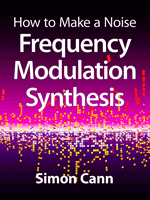
How to Make a Noise: Frequency Modulation Synthesis
(published by Coombe Hill Publishing, ISBN: 978-0955495502, available in electronic format only, noisesculpture.com/fm )
)
Frequency modulation synthesis came to prominence in the 1980s with the DX7 synthesizer which dominated the sounds in the charts for years.
FM synthesis adopts a completely different approach to creating sounds when compared with either analog or sample-based synthesis. Instead of starting with a bright sound and making it dull and/or shaping it with a filter, FM synthesis starts with a simple waveusually a sine waveand distorts it (usually with another sine wave). The interaction between the two (or more) waves creates and shapes the sound over time.
How to Make a Noise: Frequency Modulation Synthesis shows you how to create a broad, detailed, highly nuanced range of controllable tones. These principles can then be applied to any synthesizer with frequency modulation capabilities.
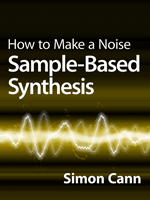
How to Make a Noise: Sample-Based Synthesis
(published by Coombe Hill Publishing, ISBN: 978-0955495502, available in electronic format only, noisesculpture.com/sample )
)
Sample-based synthesizers can be used to create the sound of a full orchestra or individual instruments. They can replicate the sound of a full drum kit, delicate vintage gear, and specialist instruments. Samplers allow one musician to play the bagpipes, a harp, a lute, and a whole orchestra, all at the push of a button.
As well as offering the facility to recreate the sound of real instruments with a high degree of sonic fidelity, sample-based synthesis also allows real sounds to be used as the basis for new sounds. These sounds can then be manipulated and mangled to create unimagined sounds with genuine complexity and depth.
How to Make a Noise: Sample-Based Synthesis looks at how to create and control soundsboth realistic recreations of real instrument and creative warped tonesand the tools and techniques that are available to help shape your sounds.
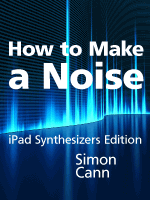
How to Make a Noise: iPad Synthesizers Edition
(published by Coombe Hill Publishing, ISBN: 978-0955495502, available in electronic format only, noisesculpture.com/ipad )
)
The fourth book in the series, How to Make a Noise: iPad Synthesizers Edition doesn't focus on a particular technique, but instead, looks at creating sounds on five synthesizers that are available for the iPad (BassLine, iMS20, iELECTRIBE, ReBirth, and NLogSynth Pro).
Many of the techniques discussed in the three previous books are covered in iPad Synthesizers Edition, but with particular focus to their application to the five featured iPad synthesizers.
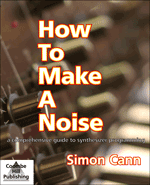
How to Make a Noise: A Comprehensive Guide to Synthesizer Programming
(published by Coombe Hill Publishing, ISBN: 978-0955495502, noisesculpture.com/comprehensive )
)
There is another book in the How to Make a Noise seriesthe original hard copy (paper) book. The four electronic-only books are parallel editions to this existing book.
How to Make a Noise: A Comprehensive Guide to Synthesizer Programming was first published in 2005 and revised in 2007 and so is now past its first flush of youth. However, it is perhaps the most widely read book about synthesizer programming (and there's a free downloadable PDF version, too).
This book focuses on building sounds (over 300 sounds are built) and looks at building these sounds with six synthesizers (Cameleon 5000, Rhino 2, Surge, Vanguard, Wusikstation, and Z3TA+) which were on the cutting edge when the book was first published, but (in most cases) have now been superseded.
However, the techniques outlined are still applicable and the book also sets out other synthesis options, such as additive synthesis and wave-sequencing (which are not covered in any of the other publications).
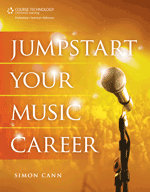
Jumpstart Your Music Career
(published by Course Technology PTR, ISBN: 978-1435459526, noisesculpture.com/jump )
)
You will have noticed that this is not a book about synthesis. However, once you can make sounds, then might to want to make some money, and this is where Jumpstart Your Music Career comes in. This book is for every musician who wants to earn a livingand to sustain a long-term careermaking music.
It has never been so easy to have a career in music: the barriers to entry have never been lower, the access to and ways to find fans have never been more straightforward, and the options to generate income have never been more plentiful.
The hard part is developing a strategy that's right for you and then executing it. Jumpstart Your Music Career looks at how you can build and sustain a successful career. It is the book that should be on every musician's bookshelf.
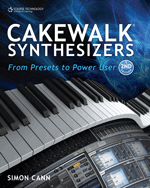
Cakewalk Synthesizers: From Presets to Power User, second edition
(published by Course Technology PTR, ISBN: 978-1435455641, noisesculpture.com/cakewalk-synthesizers )
)
Cakewalk Synthesizers: From Presets to Power User, second edition is the ultimate guide to understanding and using all of Cakewalk's synthesizers and learning about synthesizer programming.

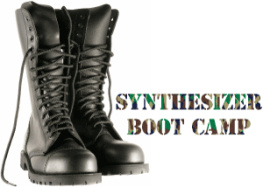


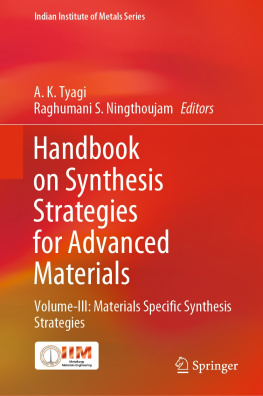

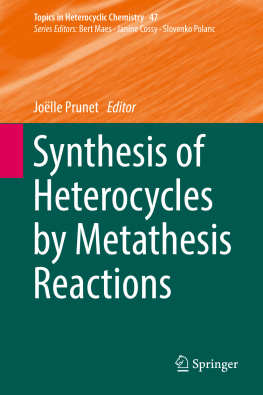


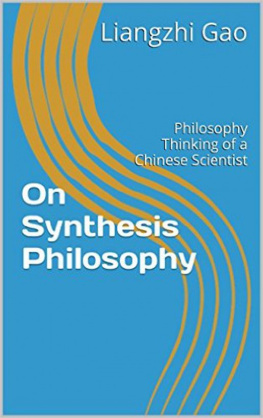


 ) and check out my music-related books
) and check out my music-related books How to Make a Noise: Frequency Modulation Synthesis
How to Make a Noise: Frequency Modulation Synthesis How to Make a Noise: Sample-Based Synthesis
How to Make a Noise: Sample-Based Synthesis How to Make a Noise: iPad Synthesizers Edition
How to Make a Noise: iPad Synthesizers Edition How to Make a Noise: A Comprehensive Guide to Synthesizer Programming
How to Make a Noise: A Comprehensive Guide to Synthesizer Programming Jumpstart Your Music Career
Jumpstart Your Music Career Cakewalk Synthesizers: From Presets to Power User, second edition
Cakewalk Synthesizers: From Presets to Power User, second edition